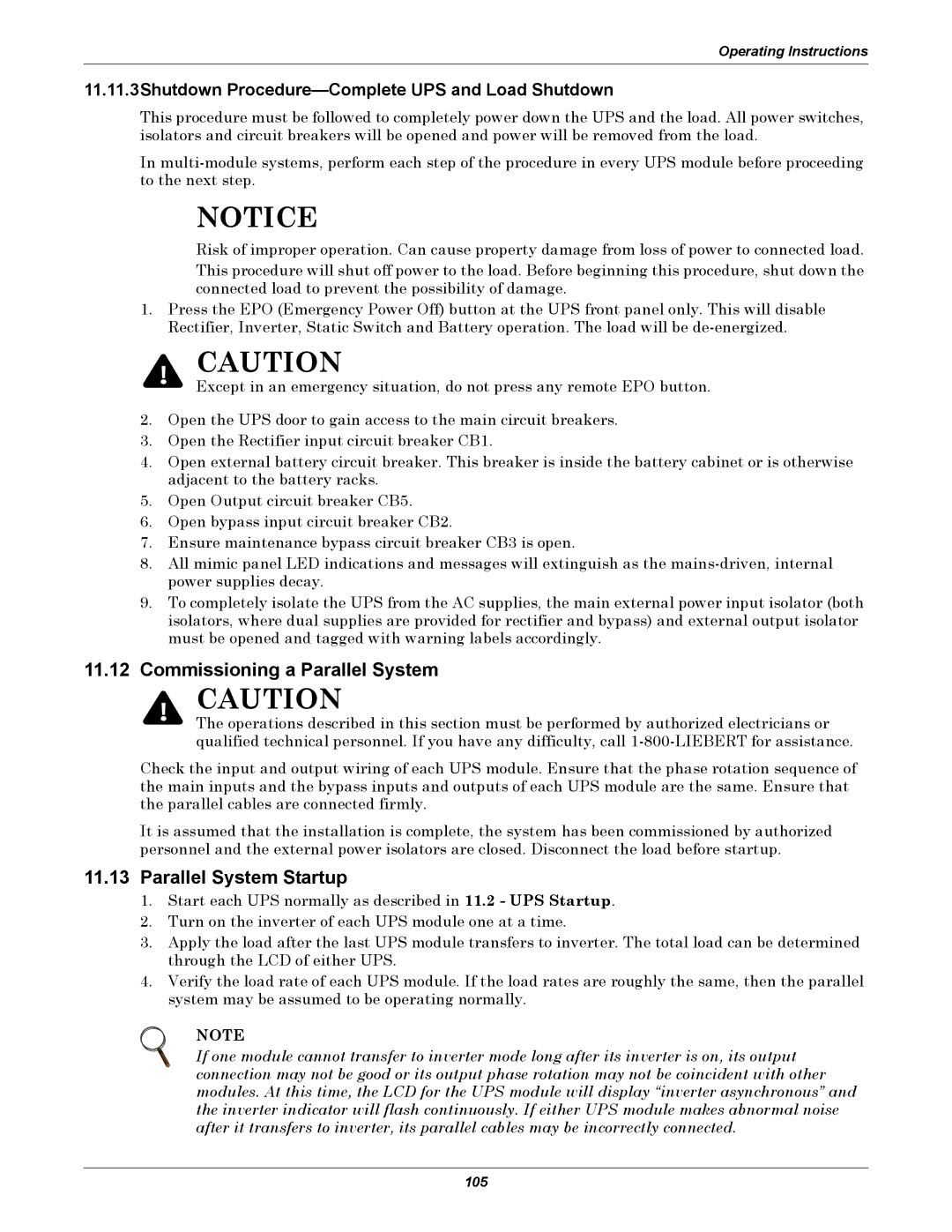
Operating Instructions
11.11.3Shutdown Procedure—Complete UPS and Load Shutdown
This procedure must be followed to completely power down the UPS and the load. All power switches, isolators and circuit breakers will be opened and power will be removed from the load.
In
NOTICE
Risk of improper operation. Can cause property damage from loss of power to connected load.
This procedure will shut off power to the load. Before beginning this procedure, shut down the connected load to prevent the possibility of damage.
1.Press the EPO (Emergency Power Off) button at the UPS front panel only. This will disable Rectifier, Inverter, Static Switch and Battery operation. The load will be
! CAUTION
Except in an emergency situation, do not press any remote EPO button.
2.Open the UPS door to gain access to the main circuit breakers.
3.Open the Rectifier input circuit breaker CB1.
4.Open external battery circuit breaker. This breaker is inside the battery cabinet or is otherwise adjacent to the battery racks.
5.Open Output circuit breaker CB5.
6.Open bypass input circuit breaker CB2.
7.Ensure maintenance bypass circuit breaker CB3 is open.
8.All mimic panel LED indications and messages will extinguish as the
9.To completely isolate the UPS from the AC supplies, the main external power input isolator (both isolators, where dual supplies are provided for rectifier and bypass) and external output isolator must be opened and tagged with warning labels accordingly.
11.12Commissioning a Parallel System
! CAUTION
The operations described in this section must be performed by authorized electricians or qualified technical personnel. If you have any difficulty, call
Check the input and output wiring of each UPS module. Ensure that the phase rotation sequence of the main inputs and the bypass inputs and outputs of each UPS module are the same. Ensure that the parallel cables are connected firmly.
It is assumed that the installation is complete, the system has been commissioned by authorized personnel and the external power isolators are closed. Disconnect the load before startup.
11.13Parallel System Startup
1.Start each UPS normally as described in 11.2 - UPS Startup.
2.Turn on the inverter of each UPS module one at a time.
3.Apply the load after the last UPS module transfers to inverter. The total load can be determined through the LCD of either UPS.
4.Verify the load rate of each UPS module. If the load rates are roughly the same, then the parallel system may be assumed to be operating normally.
NOTE
If one module cannot transfer to inverter mode long after its inverter is on, its output connection may not be good or its output phase rotation may not be coincident with other modules. At this time, the LCD for the UPS module will display “inverter asynchronous” and the inverter indicator will flash continuously. If either UPS module makes abnormal noise after it transfers to inverter, its parallel cables may be incorrectly connected.
105
